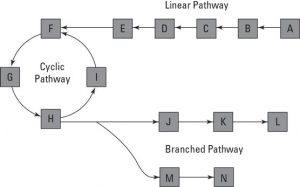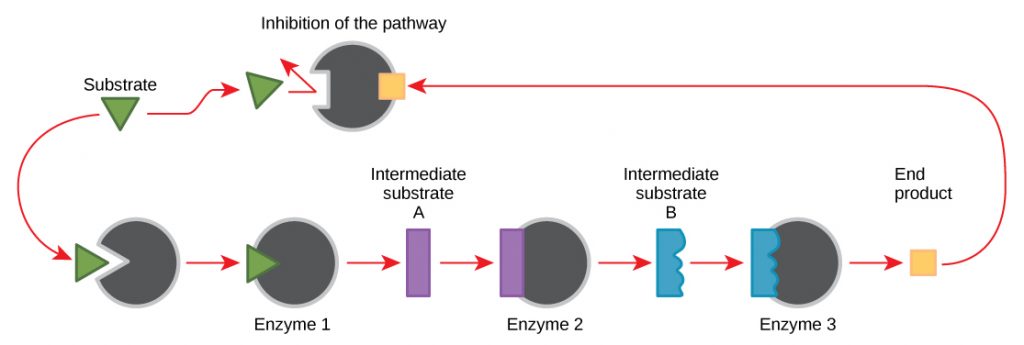Gentaur Metabolic Pathway products are available at Genprice USA from different suppliers at the best prices. Our products are of very high quality, validated by competent laboratories for exclusive use in research. You can order online or send your order to your local contact. If you are not sure of the product choice required for your research, you can always request a selection audit.
Key points
- A metabolic pathway is a series of chemical reactions in a cell that build and break down molecules for cellular processes.
- Anabolic pathways synthesize molecules and require energy.
- Catabolic pathways break down molecules and produce energy.
- Because almost all metabolic reactions occur nonspontaneously, proteins called enzymes help facilitate those chemical reactions.
Key terms
- Catabolism: destructive metabolism, usually including the release of energy and the breakdown of materials
- Enzyme: a globular protein that catalyzes a biological chemical reaction
- Anabolism: the building metabolism of the body, as opposed to catabolism
Metabolic pathways
The processes of production and breakdown of carbohydrate molecules illustrate two types of metabolic pathways. A metabolic pathway is a step-by-step series of interconnected biochemical reactions that convert a substrate molecule(s) through a series of metabolic intermediates, eventually producing a final product(s). For example, a carbohydrate metabolic pathway breaks down large molecules into glucose. Another metabolic pathway could convert glucose into large carbohydrate molecules for storage. The first of these processes require energy and is called anabolic. The second process produces energy and is called catabolic. Consequently, metabolism is made up of these two opposing pathways:
- Anabolism (building molecules)
- Catabolism (breakdown of molecules)

Anabolic pathways
Anabolic pathways require an input of energy to synthesize complex molecules from simpler ones. An example of an anabolic pathway is the synthesis of sugar from CO2. Other examples include the synthesis of large proteins from amino acid building blocks and the synthesis of new DNA strands from nucleic acid building blocks. These processes are critical for the life of the cell, they take place constantly and demand energy provided by ATP and other high-energy molecules such as NADH (nicotinamide adenine dinucleotide) and NADPH.
Catabolic pathways
Catabolic pathways involve the breakdown of complex molecules into simpler ones, releasing the chemical energy stored in the bonds of those molecules. Some catabolic pathways can capture that energy to produce ATP, the molecule used to power all cellular processes. Other molecules that store energy, such as lipids, are also broken down by similar catabolic reactions to release energy and produce ATP.
Importance of enzymes
Chemical reactions in metabolic pathways rarely take place spontaneously. Each step of the reaction is facilitated or catalyzed by a protein called an enzyme. Enzymes are important for catalyzing all kinds of biological reactions: both those that require energy and those that release it.
Contributions and Attributions
This page is licensed and was created, remixed and/or curated by Boundless. Page content has been edited and updated to confirm the style and standards of the LibreTexts platform; a detailed version history of editions to the source content is available upon request.

